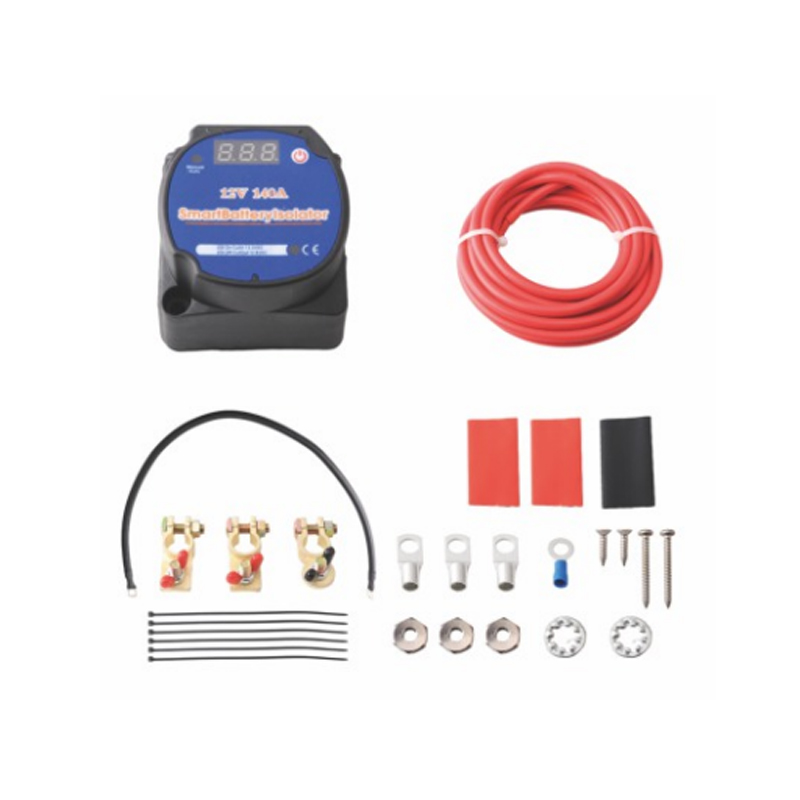- Tel: +86-13385878168
- E-mail: [email protected]
- Please contact us if you have questions.

Web Menu
Product Search

Key Differences Between a Dual Battery Isolator and Traditional Battery Isolators
Functionality of a Dual Battery Isolator
A Dual Battery Isolator allows two or more batteries to be connected to a vehicle’s electrical system but ensures they are isolated from one another when necessary. Typically, this isolator disconnects the starting battery from the auxiliary battery when the engine is off, preventing the starting battery from being drained by the auxiliary battery or accessories.
It works through smart charging technology, enabling the alternator to charge both batteries in a controlled manner. The isolator allows the auxiliary battery to be charged only when the engine is running, while the starting battery remains prioritized for engine operation. This prevents one battery from affecting the other’s performance, increasing the longevity of both.

Traditional Battery Isolators: Basic Mechanisms
In contrast, traditional battery isolators, such as manual or diode-based isolators, work on more basic principles. A manual isolator requires the user to switch the connection between batteries on and off manually. While it can separate the batteries, it doesn’t offer the convenience or automation provided by a Dual Battery Isolator.
A diode-based isolator, commonly used in older vehicles or simpler systems, uses diodes to allow current flow in one direction but block it in the opposite direction. The main issue with diode-based isolators is that they introduce a voltage drop, reducing the efficiency of the charging process. Additionally, they do not have the same advanced charging algorithms as modern Dual Battery Isolators, potentially causing undercharging or overcharging issues, especially for the auxiliary battery.
Smart Features
One of its key advantages over traditional models is its use of smart features that automate power management. These isolators feature voltage sensing, allowing them to automatically detect the charge levels of both batteries. Once the starting battery reaches a certain voltage threshold, the isolator activates to allow charging of the auxiliary battery while ensuring the starting battery remains unaffected.
This smart management feature helps maintain battery health by preventing overcharging or deep discharge, something manual and diode isolators cannot do effectively. The Dual Battery Isolator also optimizes charging for both batteries by allocating power based on their needs, reducing wear on both batteries.
Efficient Power Distribution in Dual Battery Systems
The Dual Battery Isolator excels in managing the load distribution between two batteries. For example, when the engine is running, the alternator is allowed to charge both batteries simultaneously. However, when the engine is off, the isolator ensures that power from the auxiliary battery doesn’t draw from the main starting battery. This reduces the risk of draining the starting battery, a common issue in traditional systems where the batteries are connected directly.
Traditional battery isolators often can’t handle such load distribution automatically, requiring manual intervention or relying on less precise methods like diode-based systems. These limitations can result in inefficient charging cycles, causing quicker depletion of one or both batteries over time.
Durability and Long-Term Use
Another advantage of it is its ability to manage heat more efficiently, especially under high-current loads. Unlike traditional isolators, which may overheat when handling significant power, modern Dual Battery Isolators are designed to handle larger currents without damaging components, making them more durable for long-term use in high-demand vehicles.
Traditional isolators, especially older models, can struggle with heat management and may degrade more quickly under continuous use, potentially compromising the battery system’s efficiency and longevity.
Choosing Between a Dual Battery Isolator and Traditional Isolators
In summary, it offers several advantages over traditional battery isolators. Traditional isolators, while functional, lack the advanced features of a Dual Battery Isolator and may not provide the same level of efficiency, battery protection, and durability. It is a better choice for those seeking reliable and long-term battery management.
Related Products
Request for a call today
-
-
Romy
-
Phone: +86-13385878168
-
WhatsApp: +8613385878168
-
Email: [email protected]
-
-
-
Clark
-
Phone: +86-15397359100
-
Email: [email protected]
-
-
-
Pinky
-
Phone: +86-15305875100
-
Email: [email protected]
-
- Mobile Terminal


 English
English Español
Español













